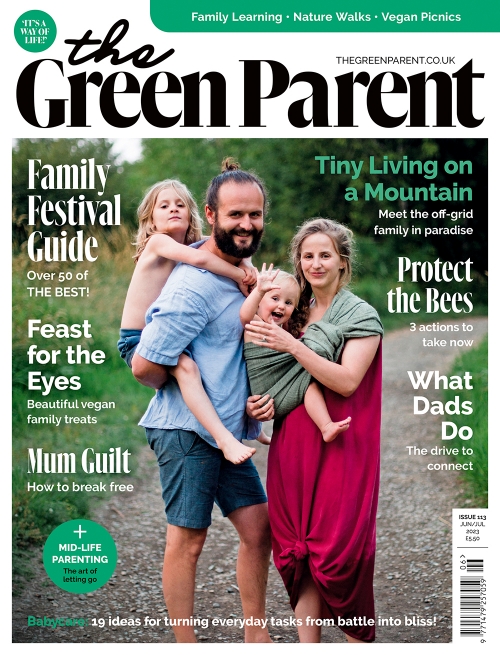Making vocal sound works on many levels, first of all in releasing tension. We can express tension and work through our fears by speaking, by singing, even by yelling. Vocal toning or the use of our own vocal sounds as a focus point can also ease discomfort. The vibration of the sound wave moves through the body and can touch places inside us like an internal massage, reaching places we cannot get to with our hands. And vocals can be a tool for HypnoBirthing, as we focus our minds on locating the accurate tone for vibrating any part of the body our attention is drawn inwards. This takes our minds off fear and inwards to where the birthing process is really taking place. It becomes a type of meditation and as such is an invitation to endorphins to flow.
Louisa Thomas is a qualified pregnancy and post natal yoga teacher with over 10 years experience. Following her studies at the Sivananda Ashram in Kerala, south India, she studied peri-natal yoga with Birthlight. Here she talks about how she uses sound during her classes as a way of calming mums and babies and improving bonding.
‘Chanting the Sanskrit mantra - Loka Samasta Sukhino Bhavantu (may all beings everywhere be happy and peaceful) is one of the first yoga techniques that I teach women and although it’s often met with some trepidation, a few weeks in, the women are usually chanting happily and with confidence.
While chanting this mantra, the pregnant women place their hands over their belly in “yoni mudra”, a hand gesture that represents the feminine energy of creation, synonymous with the womb. They’re encouraged to direct the chant and the sound to the space beneath their hands, the space being occupied by the baby. This encourages the women to practice moving the sound down, and in turn moving the breath and the energy down – a valuable technique to use during birthing. It also encourages the women to feel confident about making sound – something they are likely to want to use during birth.
The post-natal classes start and finish with the same mantra. The babies sit against their mother’s belly, and mum is again encouraged to direct the sound down, creating a ‘shower of sound’ for her baby, which can be very soothing and help with bonding. Babies remember this mantra from their time in utero and it instantly calms them. It’s amazing to see a room full of babies become quiet, calm and relaxed, just from the use of mantra.
As well as mantra we use Ujjayi Pranayama (sighing breath) a breathing technique that involves partially closing the epiglottis and breathing ‘from the throat’ to create a soft, sighing sound, similar to the noise you’d hear if you placed a shell next to your ear. It is also similar to the sound of the mother’s breath as heard by a baby in utero, so is extremely comforting to babies.
In the pregnancy yoga classes we use ujjayi breathing to relax the mothers and also to settle their minds, as the sound provides a constant, flowing rhythm and something to focus on. We also use it during the post-natal classes to soothe the babies.
Music has an important role to play and at the end of every class we have a short relaxation session where we listen to some calming music. The music is the same for the pregnancy and post-natal class, and again the babies recognise the sound. It instantly calms them. During the pregnancy yoga classes, I also offer ‘gong baths’ - the women relax with their eyes closed and let the sound of the gong wash over them. It’s extremely relaxing and again helps to completely calm and clear the mind. The gong is believed to work on a deep, energetic level by using the vibration of sound to clear any blockages, energise the system and relax the mind.
I used the gong regularly during my own pregnancy (my husband bought me a gong during pregnancy as my “eternity ring”) and I also used it when in labour. The sound of the gong really helped to relax me and completely took my mind off the sensation of the contractions. To this day, Joseph, aged nine months, absolutely loves the sound of the gong. If he hears it, he goes silent and opens his mouth in awe and recognition.’
LOUISA’S TOP TIPS FOR USING SOUND
- Try using Brahmari Pranayama or bee breath to help you relax and reduce anxiety – as you exhale make a humming sound, as if sounding the letter ‘M’, as slowly and for as long as possible. By slowing down the exhalation to create a long, slow sound the blood pressure falls, adrenaline is reduced and the heart rate is relaxed. This can be particularly effective during labour.
- Use the Ujjayi Pranayama sighing breathing technique when breastfeeding, especially in the early days - it will help you relax and is very soothing for baby.
- Playing the same calming music during labour that you’ve listened to during your pregnancy can help you feel calmer and safer.
Jay Kelly is a Hypnotherapist and Mind-Body Medicine Practitioner, mum of four and soon to be surrogate mum. Here she talks about how she uses affirmations and positive words as part of her therapy and tells her own personal experience of the power of music.
‘Affirmations and positive words are very beneficial when birthing. Say to yourself “Yes, yes, yes” and notice how it feels in your body. Now, say to yourself “No, no, no” and again consider how this feels. Our subconscious mind doesn’t differentiate between real and imagined, and so if you keep hearing positive words and statements, your body will take this on board. Add in some relaxing, calming music, and you’re setting yourself up really nicely for a beautiful oxytocin rush.
Whilst pregnant with my first baby I was overwhelmed by my job, stressed and highly strung. I used to come home from work and just need to STOP, so I’d lie down and listen to some music to relax. Back then I wasn’t sure if my baby seemed to be happier simply because the act of being still meant that she felt able to move about more, or that she was in direct receipt of the relaxing hormones I was producing, or if she was simply pleased with my music choice.
Thirteen years ago my music choice was between two albums – The Corrs Live Acoustic, and Sade’s Lovers’ Rock. Both had a wonderfully relaxing effect on me, and even though the music encouraged my baby to be active inside, I’d lie there and watch my bare tummy cascade with her movements, I’d rub my tummy, pat her bottom to the beat and talk “sweet nothings” to her. The oxytocin rush would be huge. I was so in love, and these were the moments where I would cement that bond.
Later, Sade’s dulcet tones featured at bedtime and Thea would fall asleep during the first song every time. Even now, at 12 years old, I bet it would have her out for the count in no time at all.
“I discovered hypnosis, and realised I’d been using my music to induce trance”
When it came to my second child’s birth I made a CD of birth music, and used it to relax me during pregnancy.
Then, I discovered hypnosis, and realised I’d been using my music to induce trance. ‘Trance’ being an ‘altered state of mind’ and a technique that allows tensions to drop away and relaxation to come in.
Later, my twins Kitty and Lydia were born to Jack Johnson’s Better Together which seemed highly appropriate! The songs took me away to a secluded Hawaiian beach watching the waves lapping the shore.
Even now the children are all older, I still use music to create the atmosphere that I’d like in our home. Sometimes we have energy to use up, and a good old boogie is great fun, and the girls particularly bond with each other during these times. Then, when snuggling up with calming music, the oxytocin comes back in, and we have peace once more.
I am about to carry a baby for friends, through surrogacy, and we will use music very consciously, as this will help the baby to feel calm and settled with familiar sounds once in the arms of real mummy and daddy. The couple’s wedding song was also Jack Johnson’s Better Together so I’m thankful we have similar tastes in music!’
JAY’S ADVICE FOR USING SOUND
- Choose your pregnancy relaxation music wisely, as if it works for your baby, you could be listening to it for quite some time!
- Certain tones of music and words induce trance and alter brain waves, to aid relaxation and healing.
- Keeping your baby close to your chest not only releases oxytocin for you both, but also enables the baby to continue to hear the heartbeat it has relaxed to for the last nine months.
Louisa and Jay are members of the Fertility and Birth (FAB) Network - a team of professionals who are passionate about supporting women with advice, support and a range of therapies to complement existing fertility and maternity services available on the NHS. See fertilityandbirthnetwork.co.uk.



1_278_160_c1.png)



